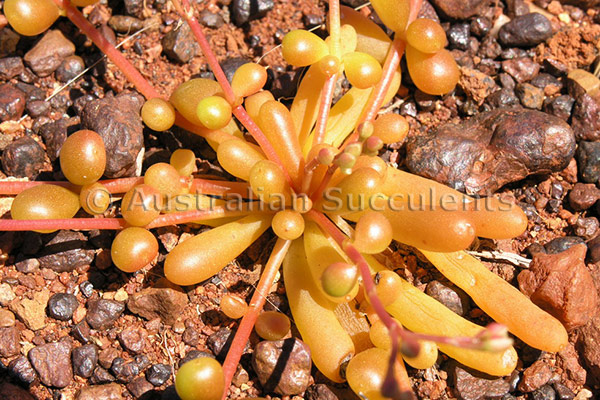General Description:
Calandrinia is a genus of small annual or perennial herbs that are found in tropical and subtropical regions. In Australia there are about 40 species which occur in arid and semi-arid zones. All of the Australian species are endemic.
Calandrinia creethae (previously Parakeelya creethae) is a prostrate to low annual herb up to about 50 mm high. The leaves are succulent to about 60 mm long with an elongated (often balloon) shape. The foliage can vary in colour from bright green to yellow and pink. Flowers appear on long branched stems, in clusters of 10 or more. They are six-petalled blooms about 7-12 mm in diameter with long stamens and are white or mauve in colour. Flowering usually occurs in spring.
Calandrinia, generally, are not widely cultivated but are worth a place in gardens in drier areas. C.creethae would probably grow best in a sunny, open location in well drained soils. Further details on cultivation of this species and of succulent plants generally can be found on Attila Kapitany’s Australian Succulent Plants web site.
Propagation can be carried out from seed which germinates well, without treatment, when fresh. Propagation trials of cuttings of this species have proved unsuccessful to date.

Yellow foliage form of Calandrinia creethae
Photo: Attila Kapitany
 Australian Native Plants Society (Australia)
Australian Native Plants Society (Australia)